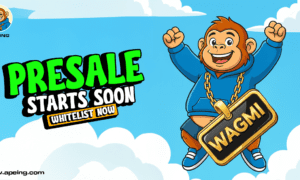Are you ready to take your business to the next level with a stunning and impactful website? Well, it’s time to find the perfect website designer who can turn your online dreams into reality! In this blog post, we’ll guide you through the process of choosing an exceptional web designer that aligns perfectly with your business goals and vision. From understanding what makes a great website designer tick to asking all the right questions, we’ve got you covered. Get ready for an exciting journey toward creating a digital masterpiece that will leave both your competitors and customers in awe!
What to Look For in a Website Designer
The perfect website designer for your business is out there. Here’s what to look for:
1. A portfolio that showcases a variety of designs and styles. You want to see that your potential designer has a range of skills and can design a website that fits your specific vision.
2. Clear communication. You should feel confident that your designer understands your vision and can communicate it clearly. There should be no ambiguity about what you want or what they can deliver.
3. A willingness to listen to feedback and make changes accordingly. You know your business better than anyone, so it’s important that your designers are open to hearing your feedback and making the necessary changes to the design.
4. A commitment to meeting deadlines. A good website designer will work with you to ensure that your project stays on track and is completed in a timely manner.
5. Reasonable pricing. Be sure to get an estimate upfront so there are no surprises later on down the road.
Understanding Your Business Needs
It is important to understand your business needs before you start looking for a website designer. What are your goals for your website? What kind of message do you want to communicate to your customers? What kind of image do you want to project?
Think about what you want your website to achieve and what kind of content it will need to include. Do you need a simple website with just a few pages, or a more complex site with an e-commerce store? Will you need to update the site regularly with new content, or can it be static?
Answering these questions will help you narrow down the features you need from a website designer, and make it easier to find the right fit for your business.
Comparing Price Points and Costs
Designing a website is a big investment for any business, small or large. The average cost to design and develop a website ranges from $1000 to $100,000, so it’s important that you choose the right website designer for your needs and budget. Here are some things to consider when comparing price points and costs:
-First, decide what your budget is for designing and developing your website. This will help you narrow down your choices of website designers.
-Next, take a look at the portfolios of the designers you’re considering. Make sure their style matches what you’re looking for in a website.
-Then, contact each designer and request a proposal outlining their fees and services. Compare the proposals to see which one is the best value for your money.
-Ask for references from past clients and check out their websites to see if they’re happy with the results. With these steps, you can be sure to find the perfect website designer for your business at the right price.
Knowing the Difference Between Bespoke and Template Websites
There are two main types of websites: bespoke and template. Bespoke websites are custom-made and designed from scratch. Template websites, on the other hand, are pre-made designs that you can buy and then customize to fit your needs.
Both have their pros and cons, but ultimately it depends on your specific needs as to which is the best option for you. If you have a very specific vision for your website and need it to be 100% unique, then a bespoke website is probably the way to go. But if you’re on a tighter budget and/or timeline, then a template website might be a better option.
Here are some things to keep in mind when deciding between a bespoke or template website:
1. Budget: Bespoke websites will generally be more expensive than template websites. This is because they require more time and effort to design from scratch. If cost is a major factor in your decision, then a template website might be the better option.
2. Timeline: A bespoke website will take longer to create than a template website. If you need your website up and running ASAP, then a template website might be the better choice.
3. Complexity: A complex website will require a bespoke solution in order to meet all of your requirements. If you need a lot of custom functionality or integrations, then a bespoke website is probably the way to go.
4. Scal ability: If you’re expecting your website to grow over time, then a bespoke website may be the better option as it can be tailored easily to your changing needs.
5. Branding and Identity: A bespoke website will help to create and maintain your branding/identity more effectively than a template website. Template websites tend to look generic and lack the ‘personal touch’ which is essential for creating a unique brand image.
Considerations for Future Growth
As your business grows, you will need to consider how your website should grow with it. You will need to take into account things like how much traffic you are getting, what kind of content you need to add, and how often you need to update your site. If you plan on growing your business, then you need to find a website designer that can help you expand your online presence. Here are some things to consider when choosing a website designer for future growth:
1. How Much Traffic Are You Getting?
The first thing you need to consider is how much traffic you are currently getting to your website. This will give you an idea of how popular your site is and whether or not people are actually interested in what you have to offer. If you are getting a lot of traffic, then you may want to consider adding more content or expanding your site so that people can find what they are looking for more easily. On the other hand, if you are not getting very much traffic, then expanding your site may not be the best option since it could end up costing you more money in hosting fees without really increasing your number of visitors.
2. What Kind of Content Do You Need To Add?
Another thing to think about is what kind of content you need to add in order to attract more visitors and keep them coming back. This could include adding new articles or blog posts, adding new photos or videos, or creating new pages with information about your products or services. You should also consider how often you need to update the content on your website. The frequency of updates will depend on how active and engaged your visitors are and how quickly new trends appear and fade away.
3. How Easy Is Your Site to Navigate?
The design of your site is just as important as the content itself. No matter how great the content is, if it’s difficult for people to find what they’re looking for then they won’t stick around very long. You need to make sure that everything is easy to access and that visitors can find what they need in a few clicks or taps. A good website designer will be able to create a layout that is intuitive and user-friendly so that visitors have a positive experience when they visit your site.
4. How Secure Is Your Website?
Finally, you need to think about website security and make sure that all of your data, including passwords, credit card numbers, and other sensitive information is kept safe from hackers and other malicious actors. If you are running an ecommerce site then you must make sure that the payments being made are secure so customers feel comfortable entering their payment information into your site. Good website designers will know how to make sure that your site is secure and that all of your customers’ data is kept safe.
Finding a Trustworthy Website Designer
When you’re looking for a website designer, it’s important to find someone who is trustworthy and who will design a website that meets your business needs. Here are some tips for finding a trustworthy website designer:
1. Ask around for recommendations. If you know someone who has a great website, ask them who designed it. Getting a personal recommendation can be a great way to find a trustworthy website designer.
2. Check out online portfolios. When you’re looking at potential website designers, take a look at their online portfolios to get an idea of their work. This will give you a good sense of their design style and abilities.
3. Read online reviews. Before hiring any website designer, be sure to read online reviews from past clients. This will give you an idea of what others have experienced working with the designer and whether or not they would recommend them.
4. Meet in person (or video chat). Once you’ve narrowed down your choices, arrange to meet with the website designers in person (or via video chat) to discuss your project in detail. This will help you get a better sense of whether or not they’re the right fit for your needs.
Examples of Great Web Design
There are many factors to consider when selecting a web designer for your business. Here are some examples of great web design to help you make the best decision for your company:
1. Dribbble – This site is a great example of well-designed website. The colors are eye-catching and vibrant, but not overwhelming. The overall layout is simple and easy to navigate. The fonts are also easy to read.
2. Awwwards – This site is another excellent example of good web design. The use of whitespace makes the site easy to navigate and the overall aesthetic is pleasing to the eye.
3. Google Design – As one would expect, Google’s Design site is an excellent example of good web design practices. The use of Grid systems and clean typography makes for a site that is both visually appealing and easy to use.
Conclusion
We hope that our guide gave you helpful insight when it comes to choosing the perfect website designer for your business. With the right web designer in place, you can trust that they will provide a reliable product and also work with you comfortably so that both of your objectives are met in the most cost-effective manner. From conducting research on potential designers to asking all of the right questions during an interview, making sure to follow these tips will help ensure that you get exactly what your company needs from a website design perspective.





























